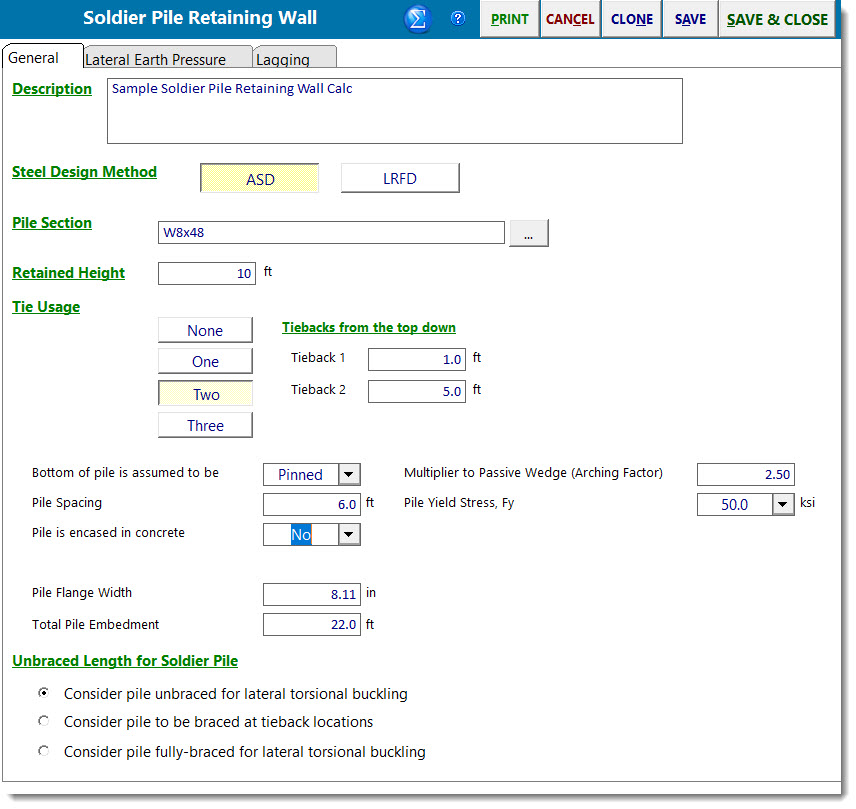
| Steel Design Method: | Select ASD or LRFD methods for design of steel pile |
| Pile Section: | Opens the Steel Section Database, allowing the selection of common pile sections. |
| Retained Height, ft: | Distance between the final excavated grade and the retained height at the top grade. |
| Tie Usage: | Select none, one, two, or three. If any tie-backs are used, they are located by their distance from the top of the pile. |
Bottom of pile is assumed to be: This is a conditional input. It is only available when tie-backs are used, which triggers a stiffness analysis using ENERCALC SEL's 2D Frame program in the background. The pile is modeled in segments from spanning between tie-backs. The bottom segment spans from the lowest tie-back to the bottom of the embedment depth. This setting controls whether that lowest support is considered fixed or pinned with regard to rotation.
| Pile Spacing, ft: | Center to center spacing of piles, typically 6 ft to 10 ft. |
| Pile is encased in concrete: | Select whether the steel pile is driven into the soil or placed into a drilled hole and encased in lean concrete. |
| Pile Flange Width / Diameter of Encasement, in: | If the pile is driven, enter the flange width. If the pile is set in lean concrete in a drilled hole, enter the hole diameter. |
| Total Pile Embedment, ft: | Actual embedment, usually rounded from the required embedment reported below. |
| Multiplier to Passive Wedge: | This is an arching factor. It takes the form of a multiplier from 1.0 to 3.0 to be applied to the pile flange width or drilled hole diameter due to wedging action and is usually provided by the geotechnical engineer. |
| Pile Yield Stress, Fy: | Yield stress of the selected pile section. |
| Unbraced Length for Soldier Pile: | Allows the user to specify the unbraced length for steel design purposes. This is a conditional input. |
If the pile is not tied back, the user can select:
•Consider pile unbraced for lateral torsional buckling
•Consider pile fully-braced for lateral torsional buckling
If the pile is tied back, the user can select:
•Consider pile unbraced for lateral torsional buckling
•Consider pile to be braced at tieback locations
•Consider pile fully-braced for lateral torsional buckling